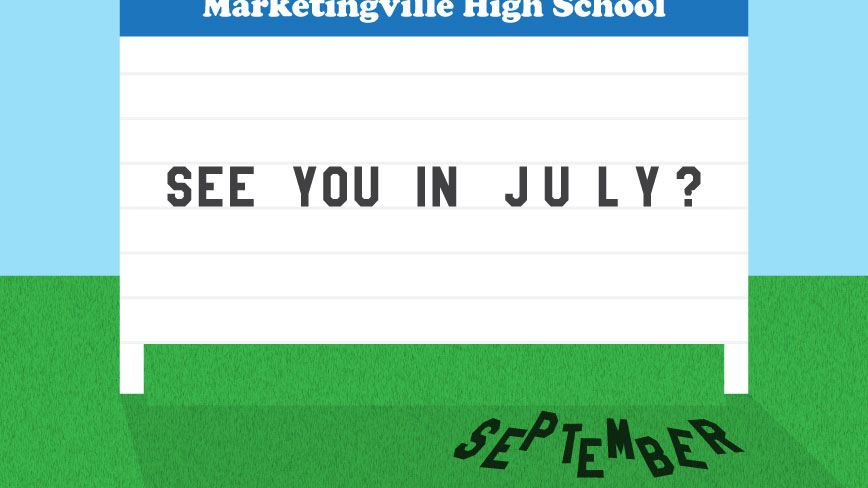Brands need to be rethinking their back-to-school marketing strategy in 2017 as the traditional lesson plan for reaching shoppers grows stale.
The start of summer may mean that K-12 students finally get their welcomed break, but most retailers are getting ahead on their summer reading in the form of consumer data. Retailers will want to cram for the extremely busy back-to-school (BTS) shopping season that now stretches from July to August. This period provides the second-biggest sales of the calendar year after the winter holidays, with consumers spending an estimated $75.8 billion on BTS-related items last year, likely to increase this year.
As brands study customer data, many have begun to realize that back-to-school shoppers are nowhere near as standardized as their school supplies list. BTS shopping is no longer about a set group of students in a set age range, or even a set time. But by checking the math on their consumer data, marketers can learn how to get an “A+” when it comes to meeting these shoppers’ diverse needs.
BTS Marketers Approach Customers with an Open Mind
The stereotypical BTS shopper is a parent with a K-12 child, but brands now recognize that this segment is just one of many. Overall college back-to-school spending actually outweighed K-12 by a lot last year, at $48.5 billion and $27.3 billion respectively. College students also make up less than half of the BTS consumer base, so their average spend is much higher.
Even when targeting college students, brands should rethink their assumptions about the typical dorm dweller. Only 45% of higher education students are under 21 years of age, while the remainder is split: 22-24 year-olds (19%), 25-29 year-olds (15%), and 30+ year-olds (21%).
Knowing this, marketers can study the students they target in order to avoid a mass ad personalization “fail.” Assuming a second-year male college student is moving into his first apartment and wants a cheap futon can be a faux pas, for instance, if that student happens to be 30 and lives with his wife off-campus. By creating custom-built audiences and including attributes like living situation, marketers can make ads relevant to their audience rather than seeming out-of-touch.
Data has helped some brands discover that the person who buys a BTS item may not always be the one who weighs heaviest on a decision. For example, knowing that older teens often steer their parents during big tech buys, HP constructed a social media-centered video campaign targeting the 14-18 demographic, leading to a sales boom for the brand. Alternatively, brands can target parents of college students since many still look to mom and pop for advice, even when they’re no longer writing the check.
Learn New Lessons in Timing and Purchase Behaviors
Preferred buying methods and time of year BTS shoppers make their purchases are becoming less standard. Brands must then know their audiences better to determine when and where typical purchases occur. While online purchases and queries peaked last year on July 11, respective item categories each had their own peak at different points. Our study shows people were more inclined to buy items such as electronics online, while clothing and smaller supplies were bought in a brick-and-mortar store.
Shoppers looking to save big on in-store items might plan these purchases around their local tax holiday. These dates typically vary by state; for instance, Mississippi has just two days in late July, whereas Connecticut’s tax holiday is a weeklong event starting on August 20th. By timing localized campaigns with these tax holidays, brands can stay top-of-mind and lift sales while maximizing ad spend. Marketers may also want to reach people who aren’t necessarily back-to-school shoppers, but eager to take advantage of the tax-free days and BTS promotions (much like how many Cyber Monday purchases are not really for holiday gifting).
As such, it may be time to reconsider the conventional wisdom that once brought BTS success for brands. Instead, focus on the tendencies and personal needs of your own audience. By targeting the right people at the right time, you can help them go back to school confidently, with the right items at the right price.

